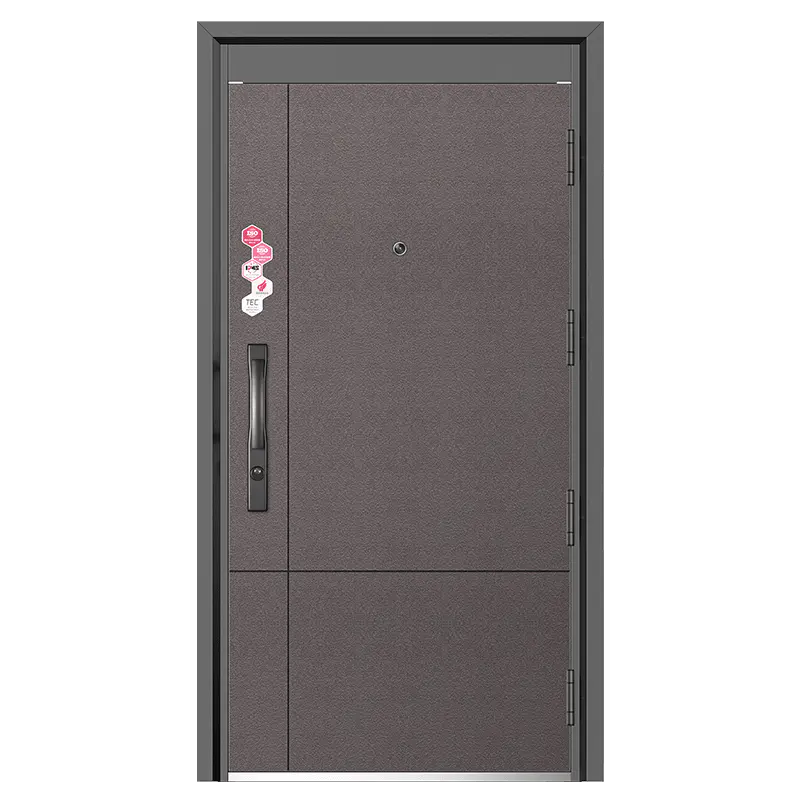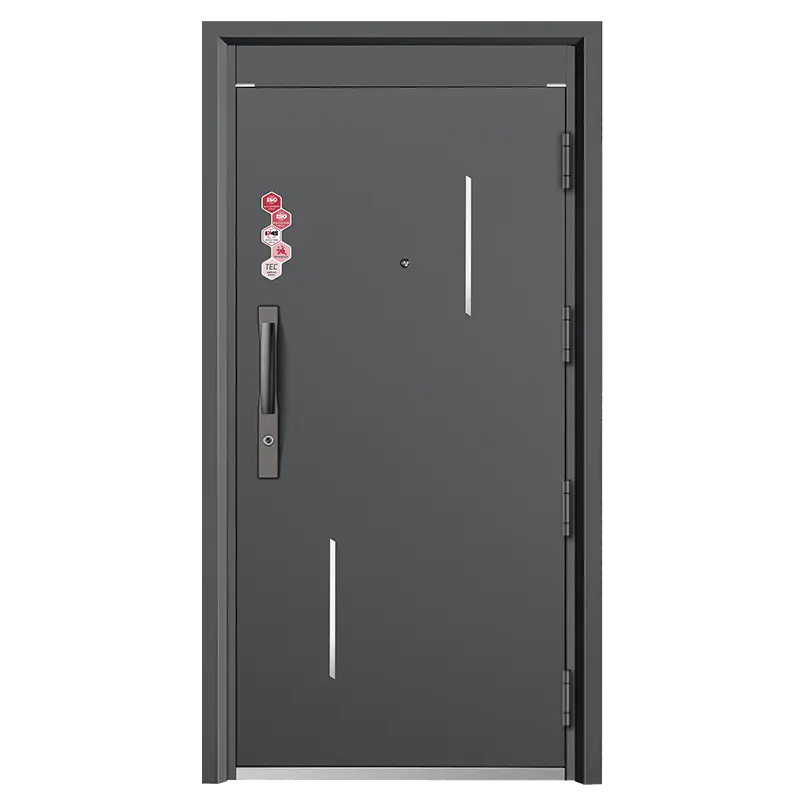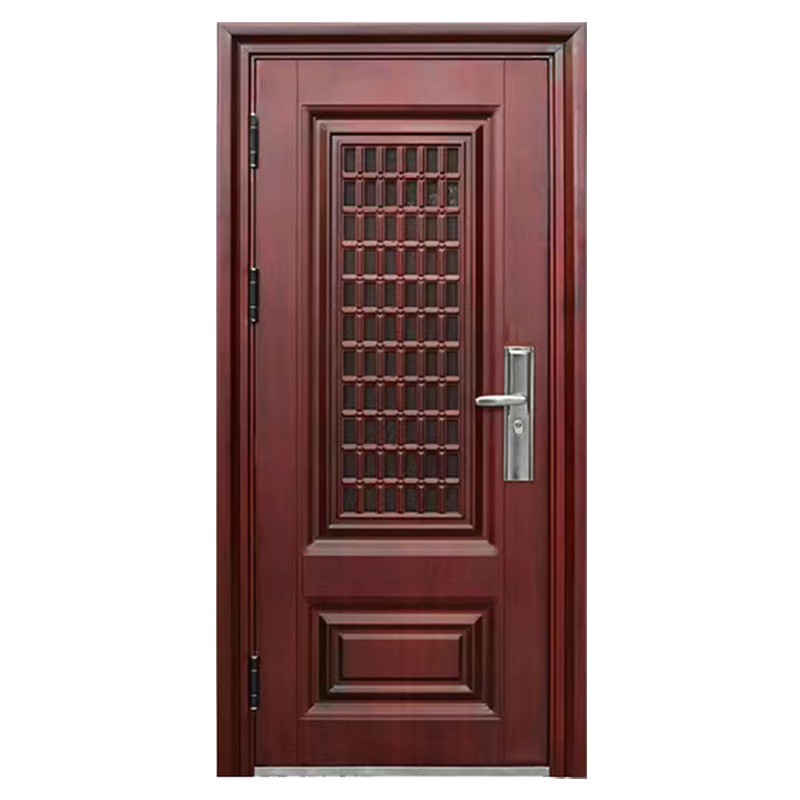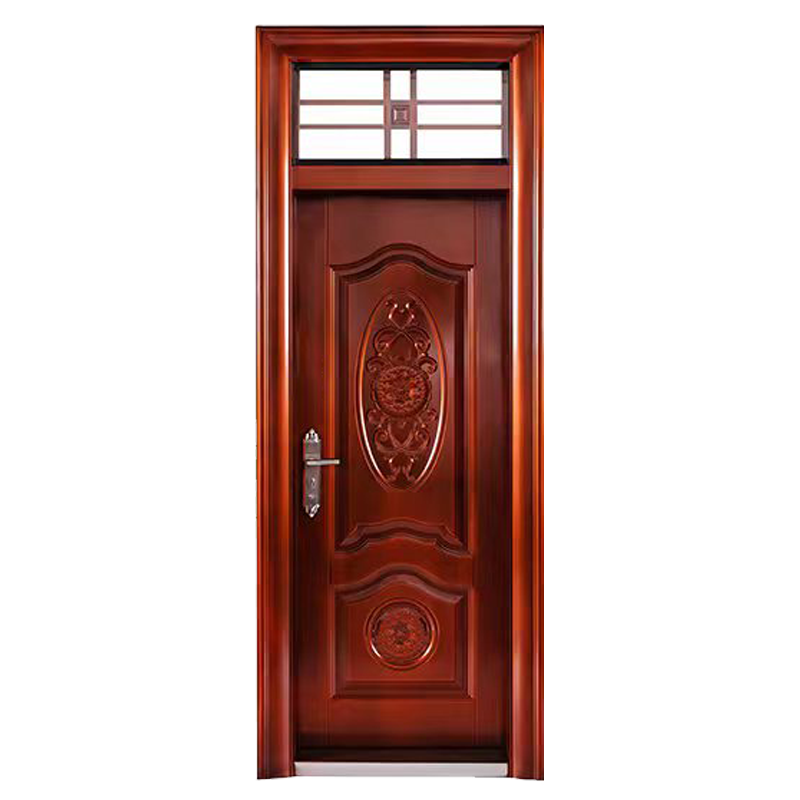Security Performance of Entrance Anti-Theft Door Against Violent Attacks
Oct 03, 2025
The primary purpose of an Entrance Anti-Theft Door is to protect homes and commercial properties from unauthorized access. However, the effectiveness of such doors is truly tested when subjected to violent attacks or physical impacts. Understanding how these doors perform under conditions is essential for ensuring occupant safety and safeguarding valuable assets.

Structural Strength and Material Resilience
A door’s ability to withstand violent attacks largely depends on its structural design and the materials used. High-quality anti-theft doors often utilize thick galvanized steel, reinforced alloys, or composite cores that resist bending, cutting, or breaking. The door frame is equally important; reinforced frames with secure anchoring to walls prevent the door from being pried open or dislodged. The combination of robust materials and well-engineered construction ensures that the door maintains integrity even under repeated physical impacts.
Resistance to Mechanical Impact
Anti-theft doors are frequently tested against mechanical impacts, such as kicks, hammer strikes, or tool-assisted attacks. A well-designed Entrance Anti-Theft Door dissipates the force of impact across its structure, reducing the likelihood of penetration or deformation. Reinforced panels, crossbars, and inner steel grids contribute to impact resistance, making it difficult for intruders to compromise the door using brute force. These features provide occupants with crucial time to respond or alert authorities during an attempted break-in.
Locking Mechanisms and Hardware Durability
Locks and hardware are critical points of vulnerability in any door system. Anti-theft doors are equipped with multi-point locking systems, hardened lock cylinders, and reinforced strike plates, which prevent forced manipulation or lock-picking. High-strength hinges and tamper-resistant screws further ensure that the door remains secure under stress. The integration of durable locking hardware with a robust door structure significantly enhances the door’s ability to resist forced entry attempts.
Vibration and Shock Absorption
Some advanced anti-theft doors incorporate shock-absorbing features or energy-dissipating cores that mitigate the effects of repeated blows or impacts. These design elements help prevent fractures, warping, or failure of both the door panel and the locking mechanisms. By absorbing and redistributing impact energy, the door maintains its protective function and reduces the risk of compromise during aggressive attacks.
Testing Standards and Certification
To verify security performance, high-quality anti-theft doors undergo standardized testing, including simulated break-in scenarios. Certification programs evaluate resistance to mechanical attacks, prying, and drilling. Compliance with these standards assures homeowners and property managers that the door can perform reliably against violent intrusion attempts. Documented testing results are often a key factor when selecting a door for high-security applications.
Additional Security Features
Beyond physical strength, some anti-theft doors include integrated alarm systems, reinforced viewing panels, and tamper detection sensors. These features enhance security by providing immediate alerts during attempted breaches. By combining structural robustness with active security elements, the door offers comprehensive protection against forced entry and violent attacks.
The security performance of an Entrance Anti-Theft Door during violent attacks depends on a combination of material strength, reinforced construction, advanced locking systems, and impact-resistant design. Doors that incorporate these features provide reliable defense against physical attacks, giving occupants confidence and peace of mind. Evaluating both the structural integrity and hardware durability is essential for ensuring that anti-theft doors fulfill their primary purpose: safeguarding people and property under certain conditions.

 English
English 中文简体
中文简体 Français
Français Español
Español عربى
عربى





